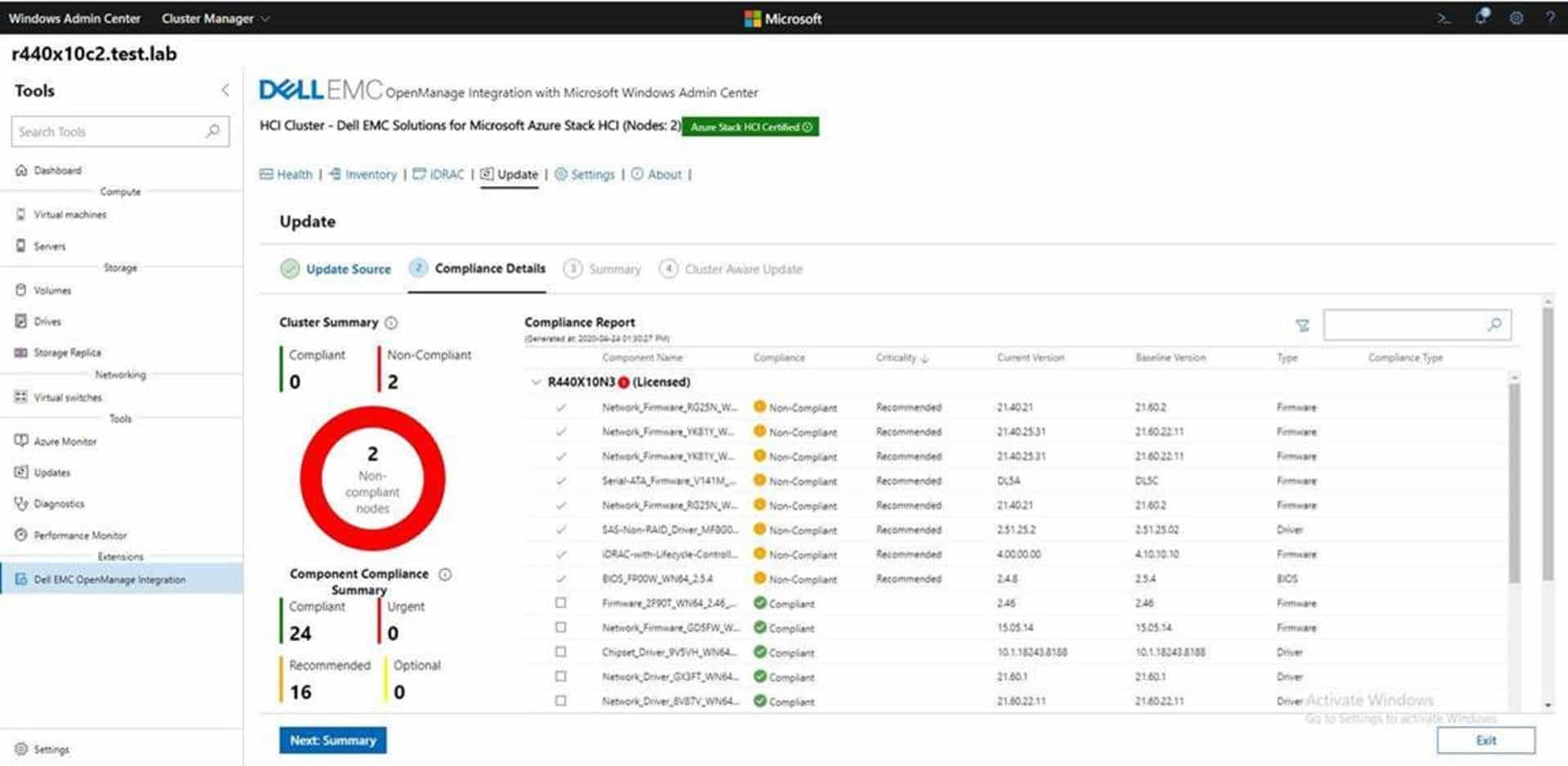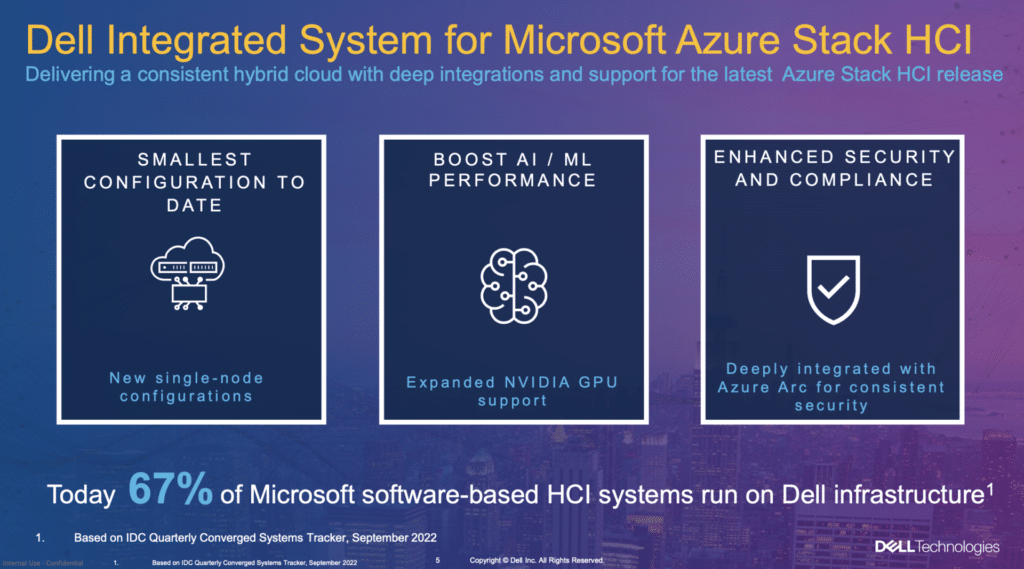Dell has announced the continued collaboration with Microsoft to deliver new single-node configurations for customers with smaller data center footprints, increased AI/ML workload performance, and support for the latest release of Microsoft Azure Stack HCI. Dell is also expanding GPU support in these systems.
Dell has announced the continued collaboration with Microsoft to deliver new single-node configurations for customers with smaller data center footprints, increased AI/ML workload performance, and support for the latest release of Microsoft Azure Stack HCI. Dell is also expanding GPU support in these systems.
The continued growth in data and a distributed global IT organization is challenging for enterprises considering data center modernization. Additionally, these same organizations are contending with data silos, unpredictable spend, skills gaps, and decreased developer velocity. Enterprises can realize better control of their environment by implementing an integrated hybrid cloud strategy that delivers a consistent cloud approach everywhere data resides.

Dell acknowledges their ecosystem of partners, such as Microsoft, plays a key role in delivering that consistent cloud approach. Dell Integrated System for Microsoft Azure Stack HCI combines the power of Microsoft Azure with the control and inherent security of on-premises infrastructure. With automated, integrated systems for Azure Stack HCI, organizations can simplify Azure hybrid cloud operations and drive consistent management and data sovereignty across on-premises and public cloud environments.
According to IDC, an astounding two-thirds of all Microsoft software-based HCI systems run on Dell infrastructure. There’s a good reason for this, Dell has invested heavily in their Microsoft solutions. Specifically, Dell has made great strides in integration with Windows Admin Center, notably pulling forward lifecycle management into Windows Admin Center. In a market segment that is fragmented and populated with smaller solutions providers, this is a major operational advantage.
Dell LCM within WAC
Single-Node and GPU Support
What’s new this time is Dell is picking up on Azure Stack HCI OS improvements to be able to offer a series of new solutions. First off, they’re supporting single-node configurations. These are great for ROBO and small office use cases that want to operate a small environment that’s easy to manage, while also being cost-effective. In these cases being HA is clearly less critical than the cost and operational advantages. These customers can also leverage the cloud for DR or workload mobility should the need arise, or any of the other Azure services that are natively supported in the HCI OS.
Dell will offer all of their Azure Stack HCI ready nodes that have flash inside as a single-node option.
If there’s one glaring hole in the Azure Stack HCI feature list, it’s GPU support. It appears that’s getting a little better in the latest release. Dell will be supporting NVIDIA A2 and A30 GPUs in their Azure Stack HCI solutions. This should give customers who are pushing into analytics and inferencing a few good options to choose from.
Lastly, there are new security enhancements thanks to deeper integration with Microsoft Azure Arc. This enables consistent security, compliance, and Dell infrastructure security from edge locations to core data centers to Microsoft Azure public cloud environments.
Dell’s Azure Stack HCI in Perspective
Of course, when it comes to HCI, Dell’s lead product is VxRail. That said, not every organization wants or needs a VMware solution, so Dell partners with Microsoft, Nutanix, and others to provide alternative solutions. For its part, Azure Stack HCI, and its iterations up to now have quietly been one of the most compelling HCI offerings for a variety of reasons. Paramount amongst these are performance and cost-effectiveness.
What Dell brings to the table is the deepest connection between hardware and Azure Stack HCI software. This is important as noted above in terms of managing the infrastructure updates, as well as maintaining security policies. As more equipment and critical data get pushed to or collected at the edge, security is crucially important. And as fewer administration resources reside at the edge, integration, and automation in terms of lifecycle updates are also, crucial.
In this update we’re pleased to see Dell offer a few GPU options, that’s a nice progression. But the one-node configuration should be something that brings mass appeal to small businesses or the distributed enterprise that want a secure, operationally friendly system that isn’t a large investment.
Dell Azure Stack HCI Solutions
Engage with StorageReview
Newsletter | YouTube | Podcast iTunes/Spotify | Instagram | Twitter | TikTok | RSS Feed


